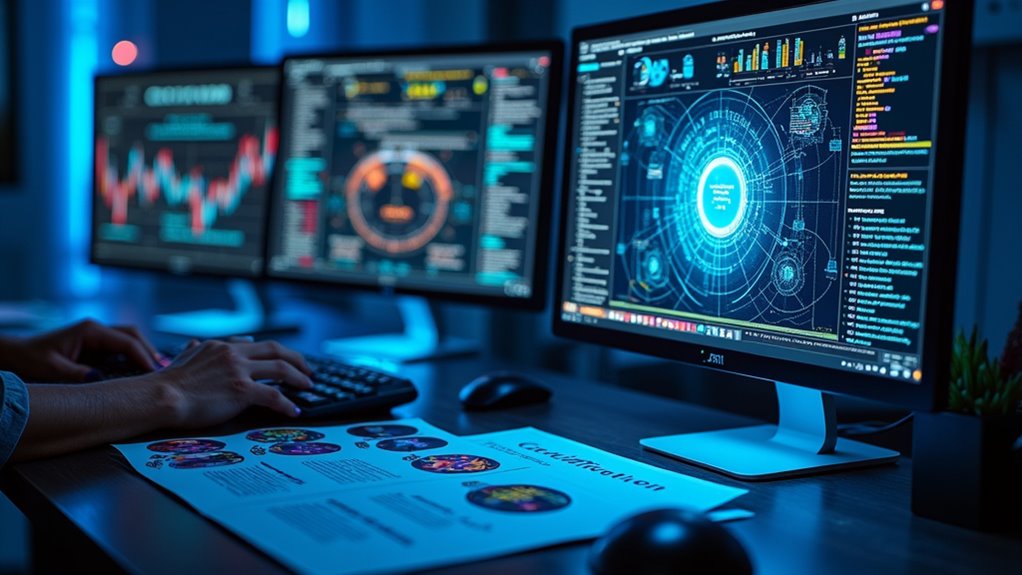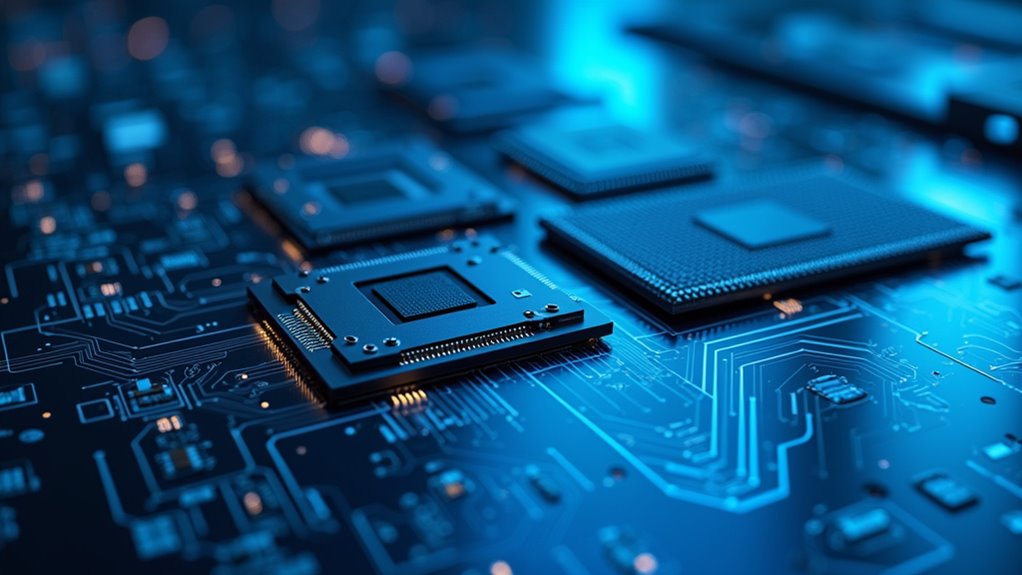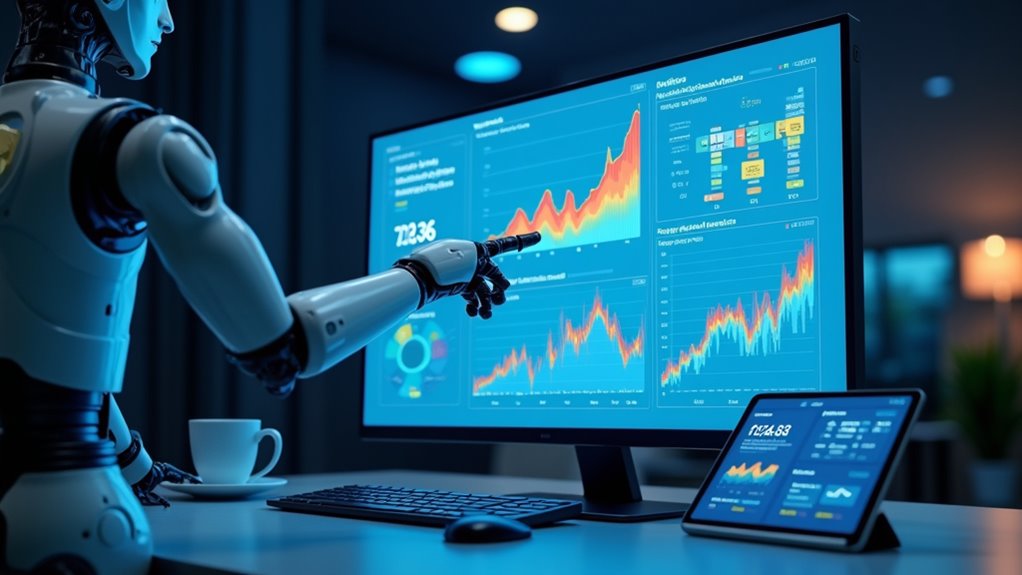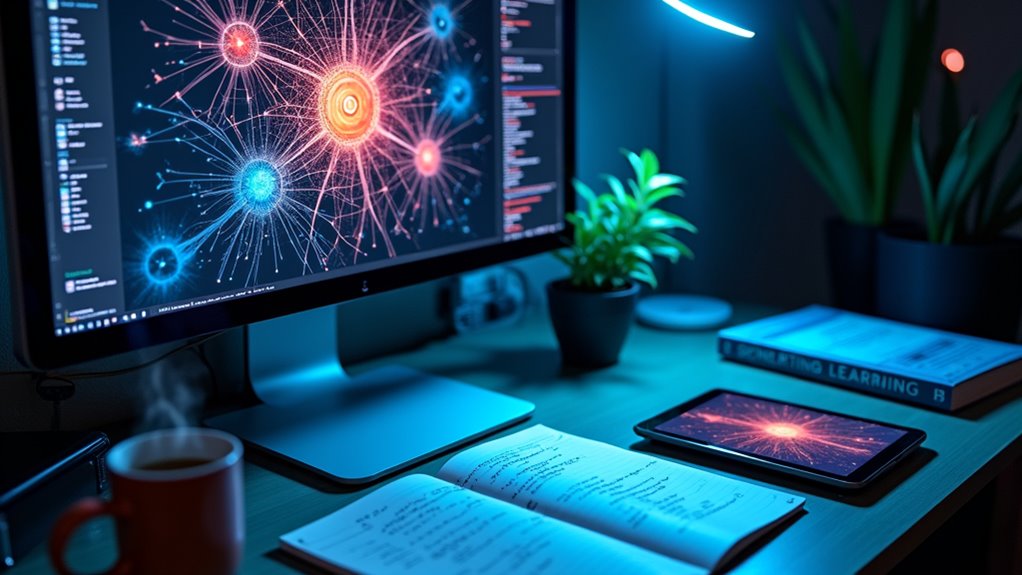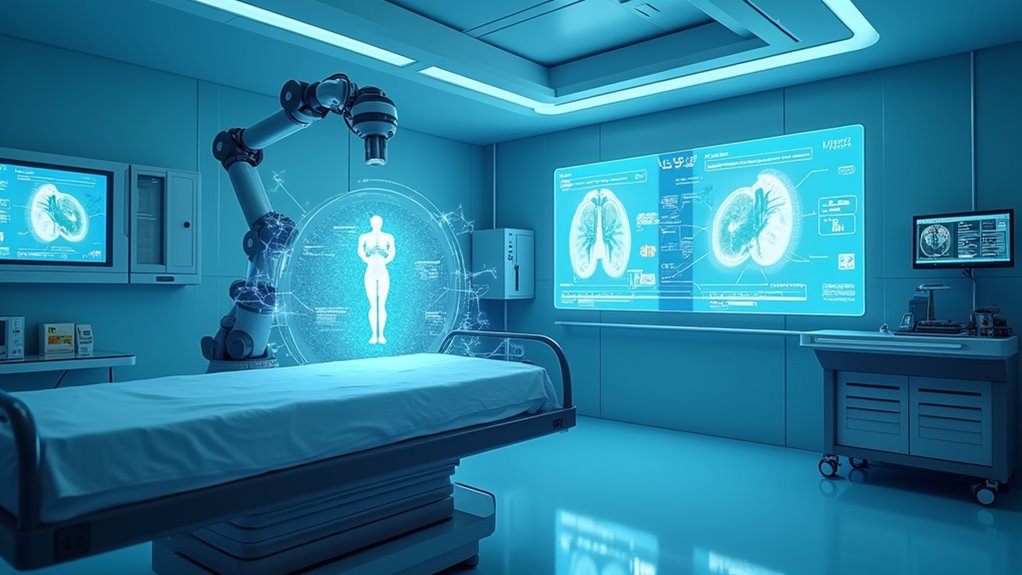Artificial intelligence will dramatically reshape employment, not just eliminate it. While AI will displace roughly 75 million routine jobs by 2025, it’s expected to create 133 million new roles requiring critical thinking and creativity. Workers who adapt will thrive; those who don’t will struggle. Expect wage gaps to widen as AI skills command premium salaries. Organizations must prioritize reskilling their workforce—120 million workers need retraining by 2025. The economic transformation ahead demands immediate preparation.
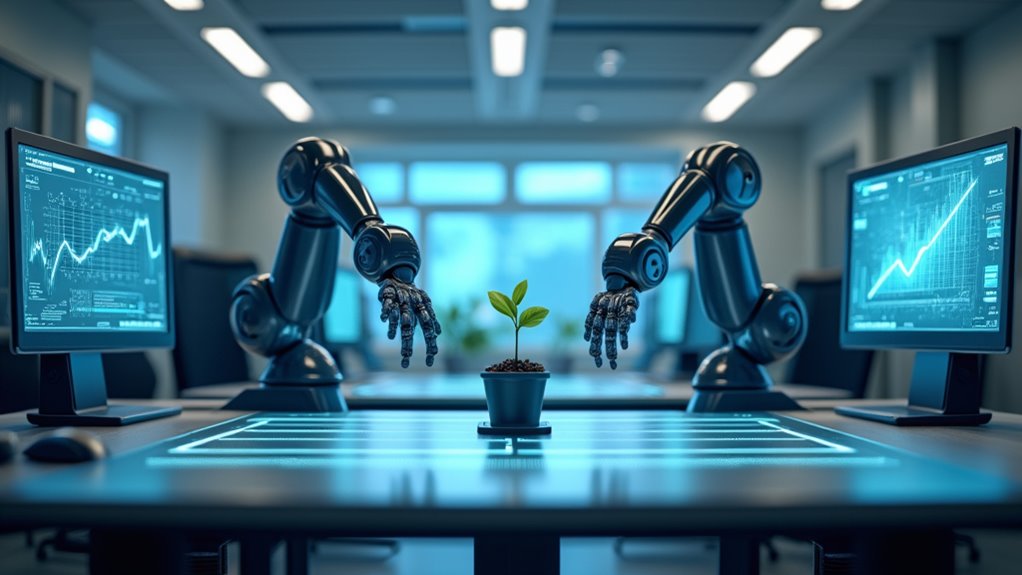
As artificial intelligence rapidly transforms industries worldwide, the global workforce stands at a crossroads of unprecedented change. The job evolution sparked by AI technologies isn’t simply about robots taking jobs—it’s far more nuanced than that. McKinsey predicts that while automation will certainly displace workers performing routine tasks, we’ll simultaneously see 20-50 million new positions created globally by 2030. These won’t be the same old jobs, folks. The skill demand is shifting dramatically toward critical thinking, creativity, and problem-solving—things machines still can’t quite master.
Think your job is safe? Think again. Generative AI is accelerating this alteration, potentially affecting nearly 30% of work hours by 2030. Even roles requiring expertise and creativity aren’t immune. But here’s the silver lining: for every job AI displaces, it’s creating new ones. According to the World Economic Forum, AI will displace 75 million jobs by 2025 while creating 133 million new ones—a net gain of 58 million positions. AI implementation in various sectors will free employees from routine tasks, allowing them to focus on complex and creative work. Currently, many organizations implement AI systems with human oversight due to their maturity level, ensuring quality and ethical standards are maintained.
What does this mean for you? Get ready for a workforce makeover. New roles like AI trainers, data analysts, and human-machine teaming managers are emerging faster than you can update your LinkedIn profile. The goal is for AI to augment human capabilities rather than simply replace workers, potentially creating more productive and fulfilling job opportunities. Healthcare, manufacturing, and finance will see the biggest job creation spurts, while simultaneously experiencing significant disruption.
The economic implications are substantial. AI is poised to boost US labor productivity by up to 0.9 percentage points annually. Yet this prosperity won’t be equally distributed. Those with AI skills will command premium salaries, potentially widening the wealth gap.
The message is clear: adapt or get left behind. IBM estimates 120 million workers globally will need retraining by 2025. Remote and hybrid work models, partially enabled by AI technologies, are becoming the new normal.
Organizations and governments must prioritize workforce reskilling to guarantee a smooth shift to an AI-driven economy. The future of work isn’t coming—it’s already here.
Frequently Asked Questions
How Can Workers Prepare for Ai-Driven Job Market Changes?
Workers can thrive in the AI revolution through skills development and continuous learning—no joke.
They should embrace technology literacy, not run from it. Flexibility matters; rigid thinkers get left behind.
Want to stay relevant? Reskill yourself before your job description changes without you.
Critical thinking and creativity remain uniquely human advantages.
Remember, the machines aren’t coming for all jobs—just the ones done by people who refuse to adapt.
Start networking and training today!
Will AI Create More Jobs Than It Eliminates?
Evidence suggests AI will likely create significant job opportunities through data management and machine learning sectors, potentially generating 20-50 million new jobs by 2030.
However, industry disruption remains concerning, with predictions of 300 million jobs at risk. The net outcome depends on economic adaptation, workforce retraining, and policy decisions.
History shows technological revolutions typically create more jobs than they eliminate—but the shift period matters. Workers in vulnerable sectors should prepare regardless of the final tally.
Which Industries Are Most Resistant to AI Automation?
Industries showing the most resistance to AI automation include those requiring deep human connection.
Healthcare resilience stems from the irreplaceable empathy doctors and nurses provide—no robot can hold your hand during bad news!
Creative professions remain stubbornly human; AI might generate images, but it can’t truly understand why art moves us.
Other holdouts? Skilled trades (try getting an AI to fix your leaky pipes!), social work, and religious counseling—where human judgment and emotional intelligence still reign supreme.
How Quickly Will AI Transform Traditional Employment Models?
AI will transform traditional employment models rapidly over the next decade.
By 2030, automation could consume nearly 30% of US work hours, forcing unprecedented workforce adaptation. Companies implementing AI already report productivity boosts, but this acceleration demands immediate attention.
Job flexibility will become non-negotiable as 12 million Americans may need to switch occupations.
Think this is happening gradually? Think again. Industries like finance and law are already seeing 30% of tasks becoming AI-eligible.
The revolution isn’t coming—it’s here.
What Ethical Considerations Arise With AI Replacing Human Workers?
Ethical implications of AI job displacement extend beyond profit margins. Companies must weigh their responsibility to shareholders against the social impact of automated layoffs.
Who bears the burden when algorithms replace cashiers? The ethical minefield includes questions of fair wealth distribution, corporate accountability for retraining, and the psychological toll on displaced workers.
Regulatory frameworks aren’t keeping pace with technology, leaving vulnerable populations exposed. The question isn’t if AI should replace humans, but how to guarantee it doesn’t create a new underclass.


